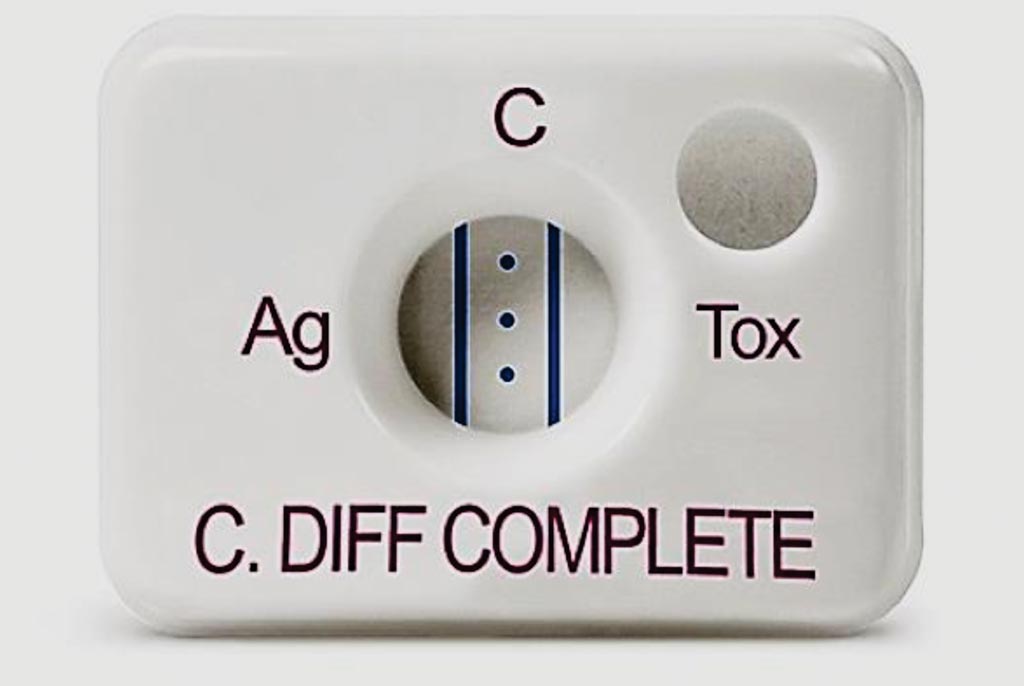Clostridium difficile Examined by Different Methods
By LabMedica International staff writers
Posted on 30 Apr 2018
The epidemiology of Clostridium difficile infection (CDI) has shifted in the last decade and is now affecting populations previously at low risk to include healthy adults, peripartum women and young children.Posted on 30 Apr 2018
The point prevalence of Clostridium difficile stool shedding in hospitalized infants from two neonatal intensive care units (NICUs) was examined utilizing standard clinical testing compared with duplex polymerase chain reaction (PCR) to identify toxigenic and non-toxigenic C. difficile strains.

Image: A positive C. DIFF QUIK CHEK COMPLETE. The assay simultaneously tests for GDH and Toxins A & B providing actionable C. difficile results in less than 30 minutes (Photo courtesy of Alere).
Pediatric disease specialists at University of Nebraska Medical Center (Omaha, NE, USA) included all infants from the two NICUs affiliated with a single academic medical center were eligible for inclusion in the point prevalence survey. Stool collection was blinded to patient characteristics and occurred during a one-week period at each NICU and repeated with a second weeklong collection six months later to increase sample size.
Stools were tested for C. difficile using enzyme immunoassay (EIA) with samples testing +/+ or +/− subsequently evaluated by Loop-Mediated Isothermal Amplification. Cytotoxicity assays were performed on all samples positive for C. difficile by any modality (Clostridium difficile Toxin/Antitoxin kit. A rapid thermocycler was used to specifically amplify a conserved region of both toxigenic and non-toxigenic C. difficile tpi gene and a non-repeat region of the toxigenic C. difficile tcdB gene.
The scientists collected 84 stools from unique infants for evaluation. EIA results showed six+/+ (7.1%), seven +/− (8.3%), and 71 −/− [84.5%] samples. All six EIA +/+ were confirmed as toxigenic C. difficile by LAMP; 6/7 EIA +/− were negative by LAMP with one identified as invalid. Duplex PCR concurred with LAMP in all six stools positive for toxigenic C. difficile. PCR identified two EIA −/− stools positive for tpi, indicating shedding of non-toxigenic C. difficile. Cytotoxicity assay was positive in 4/6 duplex PCR positive samples and negative for all stools that were EIA +/− but negative by molecular testing.
The authors concluded that C. difficile blinded point prevalence in infants from two NICUs was 7.1% by molecular methods; and lower than expected based on historical incidence estimates. In house duplex PCR had excellent concordance with clinically available LAMP and EIA tests, and added detection of non-toxigenic C. difficile strain shedding. Evolving NICU care practices may be influencing the composition of infant gut microbiota and reducing the point prevalence of C. difficile shedding in NICU patient stools. The study was published on April 13, 2018, in the journal BMC Pediatrics.
Related Links:
University of Nebraska Medical Center














